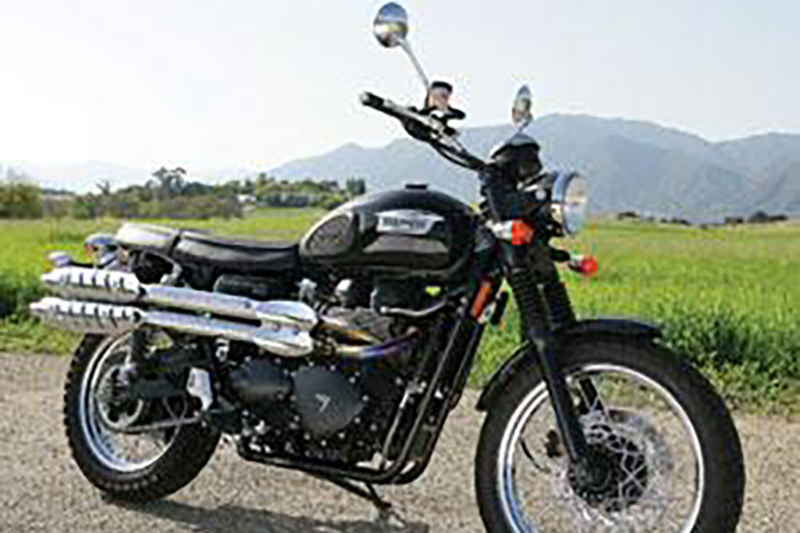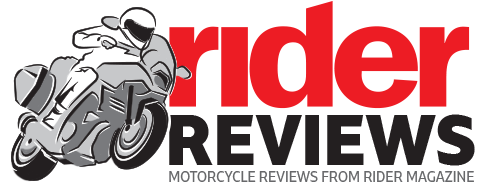2010 Triumph Scrambler

Road Test Review
Since re-emerging from the ashes of Meriden, John Bloor’s “Hinckley Triumph” has mixed and matched historic model names. Daytona, Tiger and Thunderbird have been applied to ontemporary sportbikes, sport tourers and cruisers, respectively, while variations on the Bonneville, including the T100, Thruxton and Scrambler, are rooted in Triumph’s postwar past. The Trophy name having already been applied to a big, modern sport tourer built from 1990-2004, Triumph had to come up a new name for a bike based on the 1950s-era TR6 Trophy. Back then, “Trophy” paid homage to Triumphs that won three gold medals and the manufacturers team trophy at the 1948 International Six Day Trials enduro competition. The TR6 became Triumph’s first street scrambler model, and it was aimed squarely at the U.S. market, specifically Southern California and its desert racers.
contemporary sportbikes, sport tourers and cruisers, respectively, while variations on the Bonneville, including the T100, Thruxton and Scrambler, are rooted in Triumph’s postwar past. The Trophy name having already been applied to a big, modern sport tourer built from 1990-2004, Triumph had to come up a new name for a bike based on the 1950s-era TR6 Trophy. Back then, “Trophy” paid homage to Triumphs that won three gold medals and the manufacturers team trophy at the 1948 International Six Day Trials enduro competition. The TR6 became Triumph’s first street scrambler model, and it was aimed squarely at the U.S. market, specifically Southern California and its desert racers.
With a dual-sport, high-pipe style made famous by the likes of Steve McQueen, the TR6-influenced Triumph Scrambler exudes cool. From the white piping around the edge of the wide, flat two-up seat to the dual, upswept chrome pipes with slotted heat guards, it is a real eye-catcher. While having lunch at a sidewalk café with the Scrambler parked across the street, I smiled at how many folks stopped to admire the bike. Like the other retro rides, it looks like a classic even though it’s brand-spanking-new.
The Scrambler’s protein comes from an 865cc, air-cooled, eight-valve parallel-twin. Triumph claims 58 horsepower and 50 lb-ft of torque at the crank, and it does the ton without much effort. The engine’s 270-degree firing interval gives it a distinctive exhaust note, more like a V-twin than the 360-degree crank on the Bonneville. Our test bike’s high pipes seem to have lost their baffles prior to delivery, making them much louder with a sharper blat than stock. Perhaps that also accounts for the backfiring often experienced when slowing down. Though I showed restraint on the throttle to avoid upsetting my neighbors, I enjoyed the loud, hot-rod exhaust when strafing back roads. It felt and sounded like the hell-raiser this bike aspires to be.
When Triumph revamped the Bonneville for 2009, it cleverly disguised fuel injection inside what appear to be CV carburetors. The Scrambler is similarly equipped, and it precisely feeds the fuel/air mixture to the counterbalanced engine, delivering a smooth, responsive ride. Complementing the engine is a transmission that is a breeze to shift through its five gears. Single discs pinched by Nissin two-piston calipers provide adequate stopping power, far better than the spongy, wooden brakes of yore.
Given my stature, I appreciate the leggy stance of the Scrambler, which at 32.5 inches has a 3-inch-taller seat height than the Bonneville. Its Kayaba suspension, with 4.7 inches of travel in the front, 4.2 inches of travel in the rear and adjustable only for preload in the twin rear shocks, could use more damping but provides a generally agreeable ride. The tall, wide handlebar allows a neutral, upright seating position, as well as plenty of leverage when navigating curves. Handling is light but stable, cornering clearance is surprisingly limited.
With dirt-fighting fork gaiters and semi-knobby Bridgestone Trail Wing tires, the Scrambler looks ready for the nearest fire road, even more so if you pony up for the accessory bash plate. Yep, guys used to ride and race bikes like this in the desert and woods alike, but for the rough stuff I’ll stick to my Kawasaki KLR650, thanks. But for back roads and knocking around town, the Scrambler is hard to beat in terms of pure fun.
